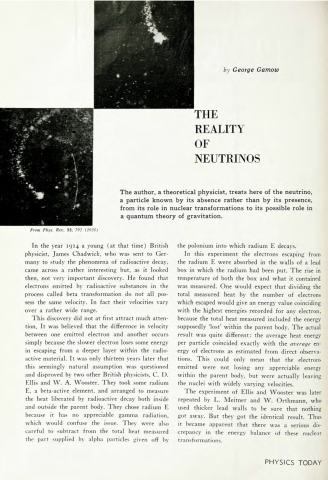The reality of neutrinos

In the year 1914 a young (at that time) British physicist, James Chadwick, w h o was sent to Germany to study the phenomena of radioactive decay, came across a rather interesting but, as it looked then, not very important discovery. H e found that electrons emitted by radioactive substances in the process called beta transformation do not all possess the same velocity. In fact their velocities vary over a rather wide range.
This discovery did not at first attract much attention. It "was believed that the difference in velocity between one emitted electron and another occurs simply because the slower electron loses some energy in escaping from a deeper layer within the radioactive material. It was only thirteen years later that this seemingly natural assumption was questioned and disproved by two other British physicists, C. D. Ellis and W . A. Wooster. They took some radium E, a beta-active element, and arranged to measure the heat liberated by radioactive decay both inside and outside the parent body. They chose radium E because it has no appreciable gamma radiation, which would confuse the issue. They were also careful to subtract from the total heat measured the part supplied by alpha particles given off by the polonium into which radium E decays.